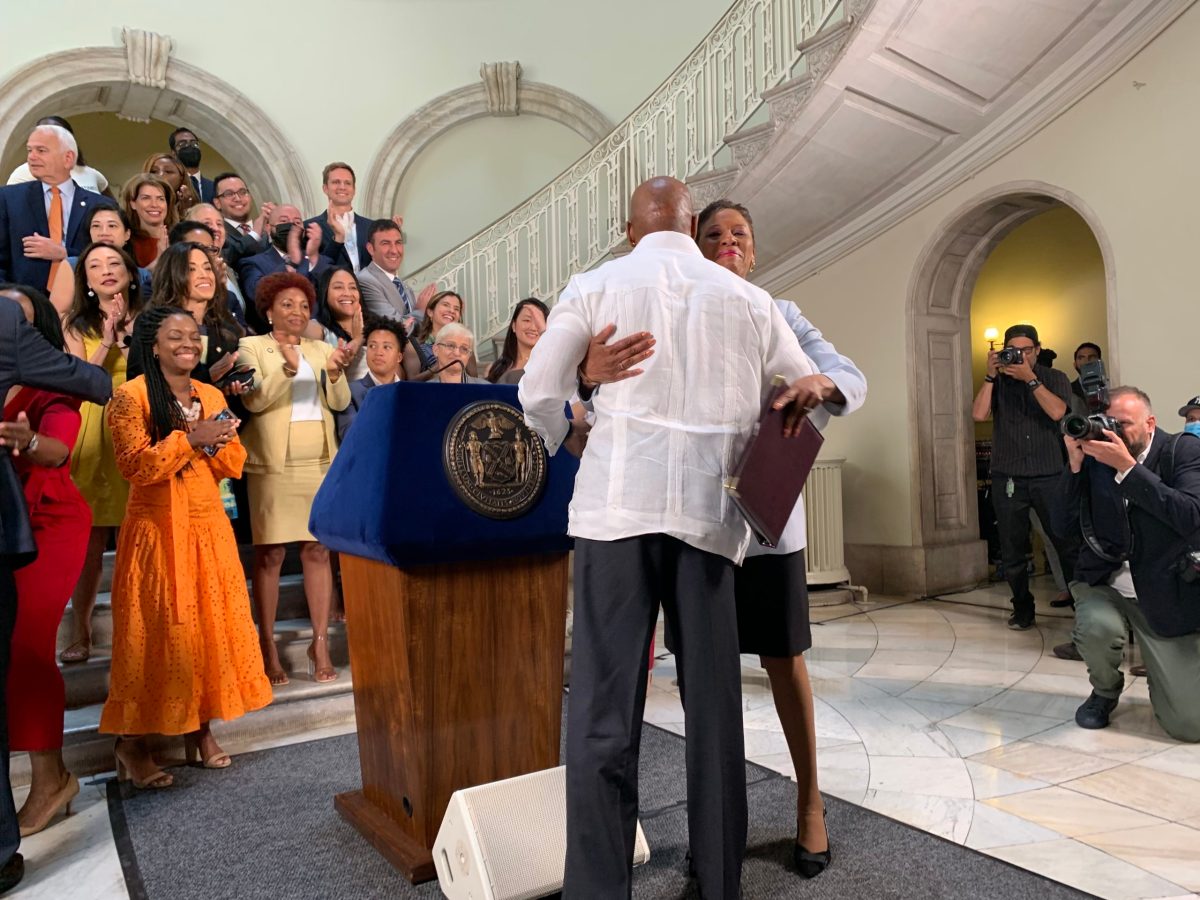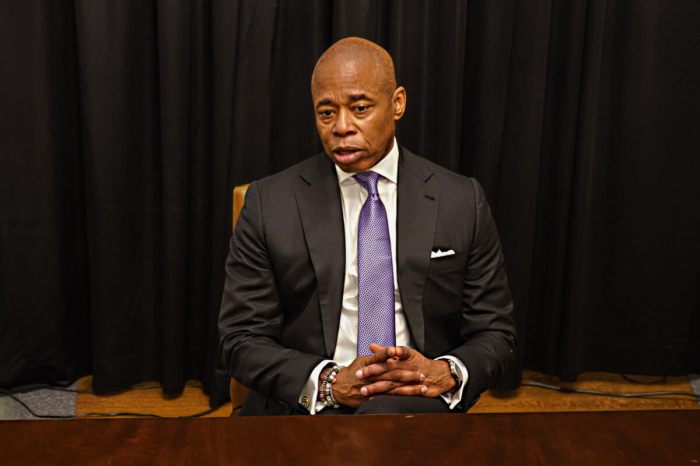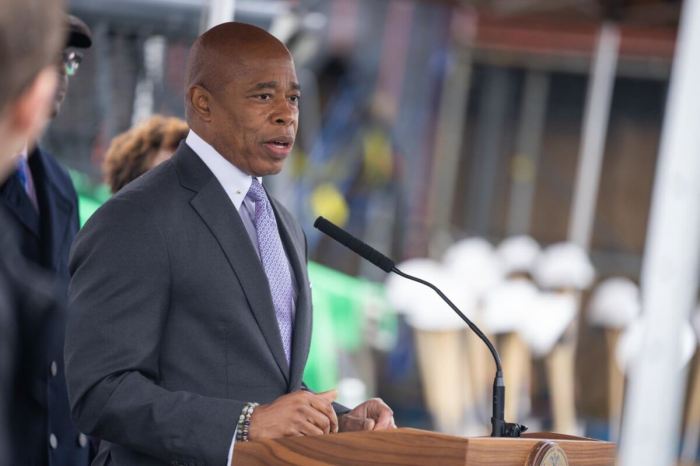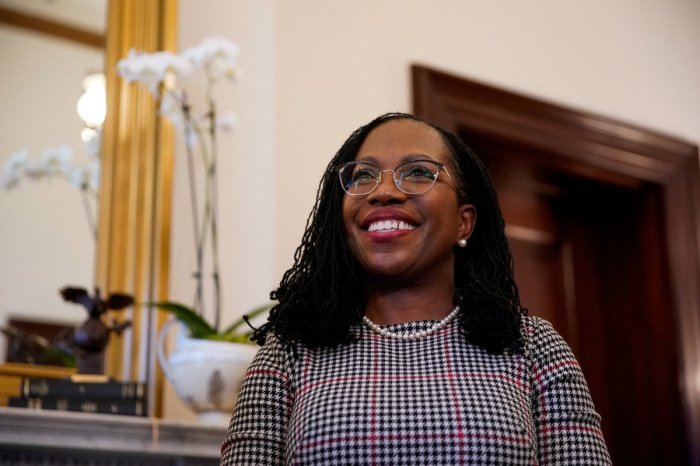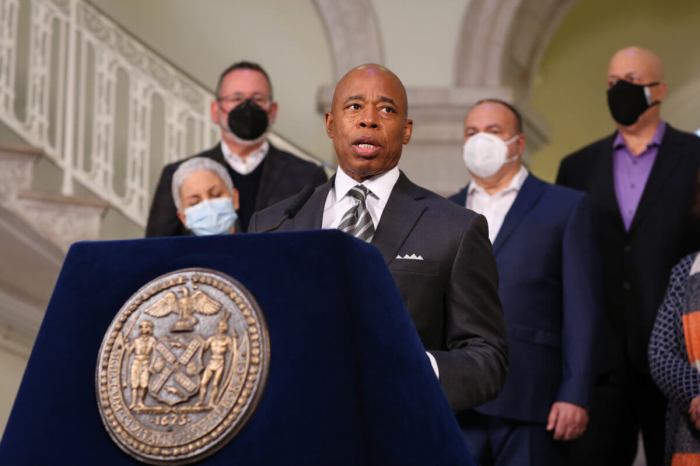Mayor Eric Adams and City Council Speaker Adrienne Adams shook hands on a fiscal year 2023 budget deal in the City Hall Rotunda Friday, making their approximately $101 billion spending plan official three weeks ahead of the July 1 deadline.
The Speaker said the City Council was able to secure $1.15 billion in additional spending in the super-sized budget, which made up 90 percent of the asks included in their $1.3 billion budget response in April. The plan is up $2.5 billion from Adams’ $98.6 billion preliminary budget released in February and up $1.5 billion from Adams’ $99.7 billion executive budget that came out in April.
Adams said he and the council were able to make the deal weeks ahead of their deadline and increase the size of the budget because they had larger than expected tax receipts since his executive budget was released two months back. Plus, he added, the negotiations were fairly easy because they found common ground on several budget measures including funding for immigrant childcare vouchers, a tax rebate for small homeowners and increasing the salaries of human service worker contractors.
“What this council, our teams, this speaker and this mayor is saying [to] every arm of government in this country [is that] it is time for us to move to a place of what we agree on and not stay in a place of what we disagree on,” the mayor said. “This was easy for us, when the council stated the additional things they wanted in the budget and came to me, I said, ‘that sounds like me.’ When they started talking about increasing this area and increasing that area, these are things we advocated for. We were so much aligned [and] people want to spend so much energy on when we are not aligned. That’s why we have this early handshake. Because what we produced is what we believe in and was brought forward by this body here.”
The Speaker said the spending in this budget is critical to ensuring public safety and recovering from the coronavirus pandemic while dealing with the loss of federal stimulus dollars.
“At this significant juncture for our city, this council has recognized that the strength of our communities is critical,” the speaker said. “We know that in order for our communities to be safe, and for our city to be stronger, we have to invest in New Yorkers. That is why we have advanced a vision for a more balanced approach to making our communities safer. This budget is the start of realizing that goal. In this budget, we are investing in young people, our communities, those underserved by our government for too long and all New Yorkers. Whether it’s helping our unhoused New New Yorkers, undocumented New Yorkers or those in need of food assistance. We are expanding access to key services, protecting our homeowners, providing opportunity and ensuring sanitation services and parks and priorities for all communities.”
Both the mayor and the speaker touted that this is a balanced budget that greatly invests in building the city’s savings.
Mayor Adams said it builds the city’s reserves by $8.3 billion, which is the highest level in city history. It also adds $750 million to the Rainy-Day Fund, $750 million to the Retiree Health Benefits Trust and $500 million to the General Reserve. Plus, they added $3 billion to the labor reserve in anticipation of upcoming union contract negotiations – overall the reserve has been replenished by $4.7 billion.
Growth in personal income taxes driven by a successful year on Wall Street allowed the city to increase its projections for tax revenue for fiscal years 2022 and 2023 by $3 billion and $1.5 billion respectively, the mayor said. That higher revenues helped the city put more money into reserves and close the fiscal year 2023 budget gap.
“After two years, this pandemic decimated our economy, decimated our education system, decimated our healthcare system, we knew we had to save,” Adams said. “The number one thing we learned is: be prepared and plan ahead. So today, I’m proud to announce that together we increased our reserves, and we continue to plan ahead to be ready for the future.”
In terms of spending, the mayor and speaker highlighted several budget lines they say are an investment in New Yorkers. This includes $$19.2 million for childcare vouchers for low-income and immigrant families. Also, $90 million towards a property tax rebate for 600,000 eligible small homeowners. And a $60 billion contract adjustment for human and legal services workers.
Plus the spending plan also puts $13.5 million of additional funding into the Fair Futures program – which provides services for children aging out of foster care and $75 million for the Fair Fares program that subsidizes reduced fare MetroCards for low income individuals, the mayor and the speaker said.
The budget also puts dollars into the city’s parks and cultural institutions, they said. Forty three million dollars is going into upgrading and maintaining parks while $448 million is going towards capital improvements. For cultural institutions, the budget puts $40 in the Cultural Development Fund and the Cultural Institutions Group.
Overall, the mayor said he wants this budget to not just bring the city back to where it was before the pandemic but significantly improve upon it.
“So, when I hear people say, ‘I want to go back to the city, the way it was before COVID,’ I don’t,” Adams said. “Because pre-COVID 65 percent of Black and brown children would not reach a proficiency in the Department of Education. Pre-COVID immigrant families could not get childcare. Pre-COVID crime was relegated to certain parts of the city. So I don’t want to go back to the way it was. I want to go to the way it ought to be.”


